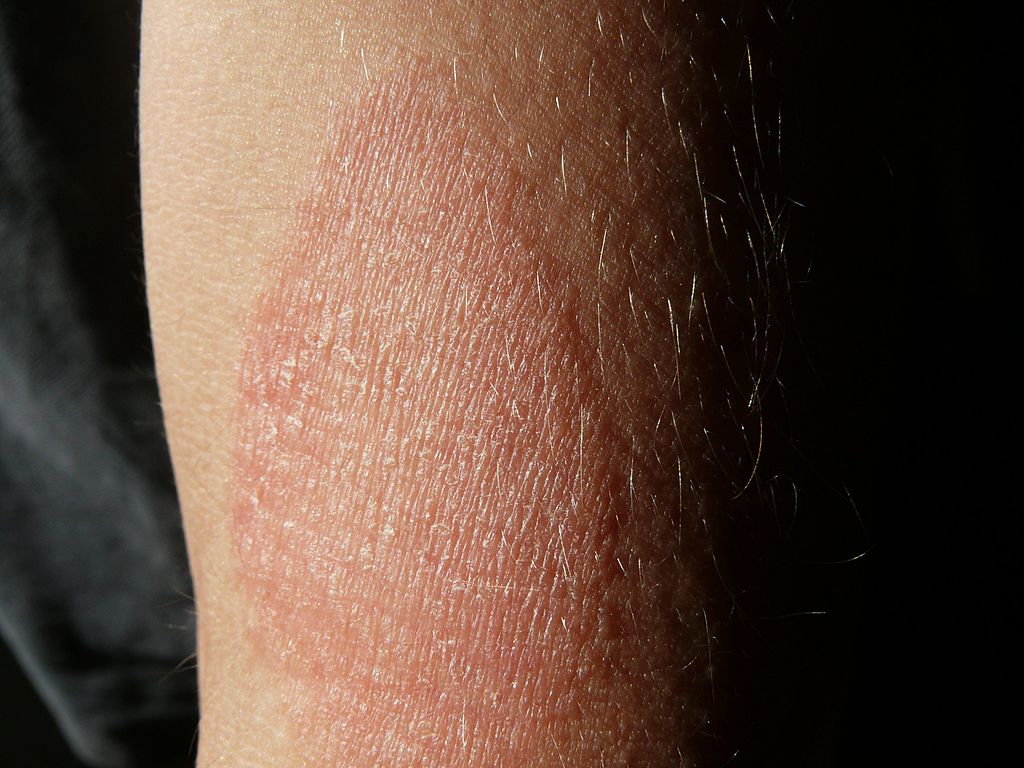Atopic dermatitis (AD), the most common form of eczema, is a chronic inflammatory disease that results in itchy, red, and irritated skin. From newborns to adults, nearly 18 million people in the United States are affected by AD. Atopic dermatitis can be persistent, and those affected may need to try various treatments over months or years to control it. Even if treatment is successful, signs and symptoms may return. Now, researchers from the University of California, San Diego (UCSD), School of Medicine, report they have identified a universal strain of bacteria derived from healthy human skin that can treat atopic dermatitis.
Their study, “Development of a human skin commensal microbe for bacteriotherapy of atopic dermatitis and use in a Phase I randomized clinical trial,” was published in Nature Medicine.
“Staphylococcus aureus colonizes patients with AD and exacerbates disease by promoting inflammation,” wrote the researchers. “The present study investigated the safety and mechanisms of action of Staphylococcus hominis A9 (ShA9), a bacterium isolated from healthy human skin, as a topical therapy for AD.”
“The main question we wanted to answer was if this was safe. This was a safety study,” explained Richard Gallo, MD, PhD, the Ima Gigli distinguished professor of dermatology and chair of the department of dermatology at UCSD School of Medicine. “We found exactly what we hoped to find. The eczema of participants who received the bacterial treatment improved and there were no adverse events.”
The researchers screened more than 8,000 isolates of Staphylococcal bacteria derived from the skin of individuals without eczema, and identified a few strains that inhibited growth of Staphylococcal aureus. In their findings, the researchers identified a single strain of bacteria called Staphylococcus hominis A9 that could be used for the treatment of atopic dermatitis.
“That’s how we found the universal strain. This was one out of 8,000 strains that were tested in a dish for their ability to kill Staphylococcal aureus and treat atopic dermatitis,” said Gallo. “And it worked.”
The researchers then tested animal models where mice were given an experimental version of eczema. Researchers then mixed Staphylococcus hominis with unscented lotion and applied the mixture to the mice twice daily for three days. After treatment, the mice were essentially cured of eczema.
This type of treatment, bacteriotherapy, is the use of bacteria or their products in treating an illness. The success with the animal models led to the Phase I clinical trial using bacteriotherapy to treat 54 trial participants with eczema. Two-thirds of the participants showed a large reduction in S. aureus populations on their skin and improvement in their eczema.
This study will give hope and relief to those suffering with AD. Future studies are needed to determine whether this treatment can be used for long periods of time to reduce the severity of eczema and improve quality of life.
“From our research, we’ve determined this rational therapeutic approach for atopic dermatitis appears to be safe for people to use to treat their eczema,” said Gallo. “And it’s easy, too, because it’s just a cream and avoids the side effects of steroids and other drugs that target the immune system.”







